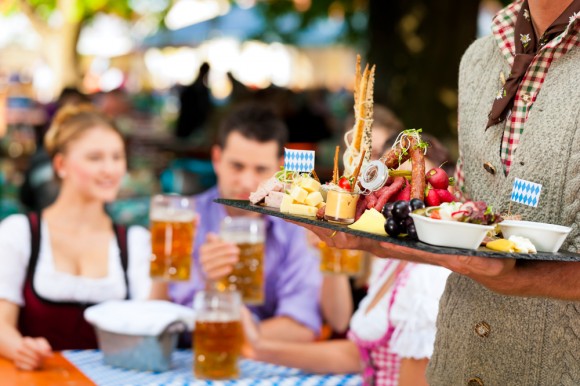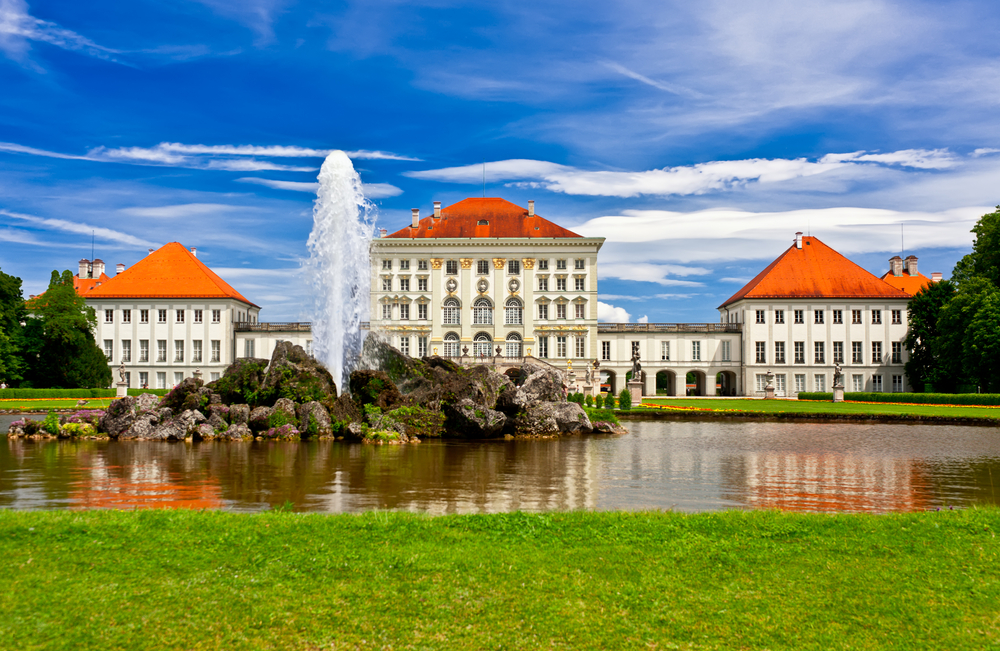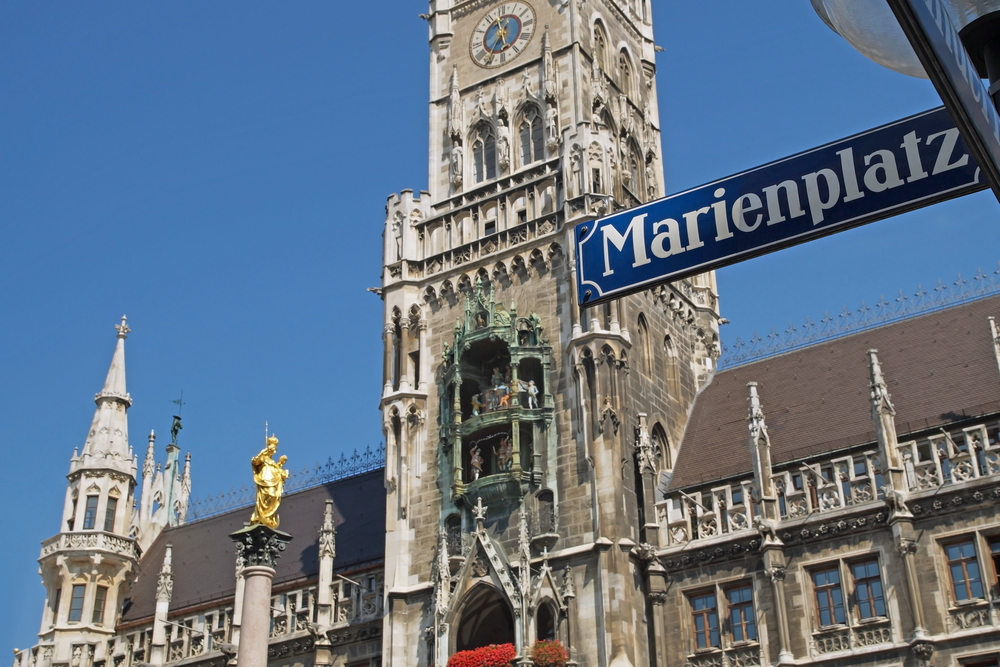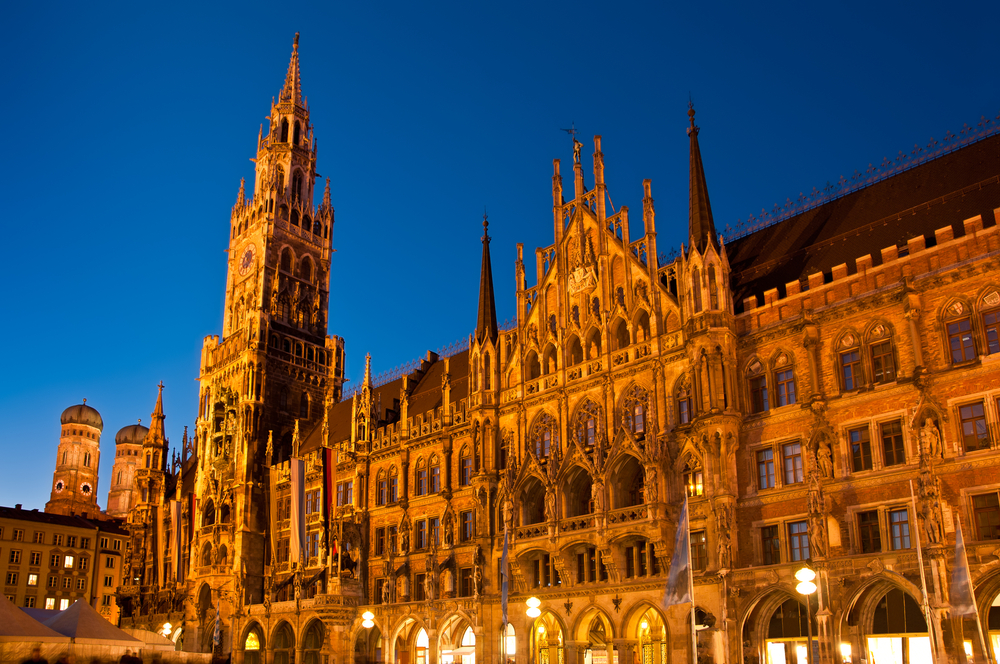Munich, or München to give it its German name, is the capital and largest city of the German state of Bavaria, which also happens to be the biggest state in Germany. No stay in Germany is complete without at least a weekend exploring this world-renowned city on the edge of the Alps.
Munich is a beautiful green city that offers plenty of parks and open spaces, but its wealth and opulence is perhaps what is most noticeable upon arrival. It’s true to say that Munich is very prosperous and Germany’s fastest growing city – many corporations host their European headquarters here and no major fashion label is without a flagship store in this trend-focused city.
Munich has a lot of attractions to offer for all ages and tastes. Discover art, architecture, history, modern technology, shopping, beer (of course!) and great food. Use our guide to discover the top sights that you should visit whilst in Munich.
Parks
Englischer Garten
The English Garden is one of Europe’s biggest city parks and is even larger than New York’s Central Park. In the beloved park, one can see locals and visitors walking, jogging, cycling, street musicians performing, children playing, students sprawling about and so much more. It consists of 910 acres and has mature oak and maple trees as well as meadows of lush grass.
At the park you can find the Japan teahouse and Japanese garden which were created on a small island in celebration of the Summer Olympics in 1972. The teahouse was given as a gift to Bavaria by the Japanese. Celebrated by a Japanese tea master, a traditional Japanese tea ceremony is held regularly.
Kleinhesseloher See, a beautiful lake located in the center of the park, provides a place to absorb nature. Near the lake is a beer garden to unwind and relax with a pils. Leave your modesty home as many Münchners legally bask nude in the sun!
Surfing can be found at the southern tip of the English Garden. Catch a wave on the artificial surf produced by a water pumping mechanism. The surfers are such an attraction that they are included in tourist brochures. You will often find crowds of people leaning over a bridge cheering on surfers clad in wetsuits. According to the park director, surfing may soon be a thing of the past. Surfing and swimming is actually officially forbidden because of the raging torrent has dangerous current and undertows, but it seems the surf bums have yet to hang up their boards.
Hofgarten
The Court Garden is a garden located between the Residenz and the English Garden. Built as an Italian style Renaissance garden, it was commissioned by Maximilian I, Elector of Bavaria in 1613-1617. Gorgeous fountains, radiant flowerbeds, lime trees, gravel paths and benches attract locals and tourists alike. After the destruction during WWII, the garden was rebuilt and partially redesigned into a compromised design between the landscaped character it had during the 19th century and the original 17th century design.
The main attraction of the garden is the Temple of Diana, a pavilion that was designed in 1615 by Heinrich Schön the Elder. The pavilion has eight arches and from each arch radiates a footpath that divides the garden into eight individual sections. On top of the pavilion is a bronze statue called Tellus Bacarica. The statue is a symbol of the Bavarian land treasures- grain, water and salt.
Olympiapark
The Olympiapark is located in north of the city where soldiers once paraded and where the world’s first Zeppelin landed in 1909. Constructed in 1972 for the Summer Olympics, the park serves as a venue for cultural, social and religious events. Olympiapark annually draws people to concerts, festivals and sporting events. The swimming hall and the ice-skating rink on the same site are open to the public.
It is advised to first stop by the Info-Pavilion for information, maps, tour tickets and a model of the complex. MP3 players can be rented for a self-guided audio tour. Tickets are available for a 90-minute guided Adventure Tour that covers the entire park by foot or on a toy train.
The Olympiaturm (Olympia Tower) stands 291m and weighs 52,000 tonnes. At the tower is an observation platform where visitors can see the breathtaking backdrop of the Alps. Also at the tower is a small rock & roll museum with memorabilia including a guitar signed by Ozzie Osbourne, a poem penned by Jim Morrison and Britney Spears’ glitter jeans and more. Additionally at the height of 182m is a revolving restaurant that seats 230.
Landmarks
Schloss Nymphenburg
Nymphenburg is a must see if you get to Munich. This lavishing palace sprawls around 5km northwest of the Altstadt. The Baroque palace served as the main summer residence of the rulers of Bavaria and the House of Wittelsbach. It’s noteworthy to mention that the head of the once royal Wittelsbach family, Franz Duke of Bavaria, still resides in an apartment on the premises today.
There is an entry fee to enter the palace. Though only a few rooms are open to the public, it is worth the entrance price to see the Gallery of Beauties (Schönheitengalerie) containing 36 portraits of attractive female friends of the then King Ludwig. The most popular image is of beautiful Helene Sedlmayer, the daughter of a shoemaker, who is adorned with a lavishing gown given to her by the king. There is also a portrait of Ludwig’s alluring and notorious lover Lola Montez.
The palace’s grounds are beautiful and have magnificent gardens in the rear. The gardens are an amazing place to relax as you will find benches and paths throughout. Additionally, there are several buildings in the palace gardens.
Marienplatz
Marienplatz, the heart of the Altstadt, is a central square that’s a popular gathering spot which bursts with a lot of personality. Marienplatz is named after the Mariensäule, a Marian column that was erected in 1638 to celebrate the end of Swedish occupation. From the center visitors can explore many old and wonderful buildings, churches and landmarks.
At certain times of the day (11 a.m. and 5 p.m. from March to October) millions of tourists annually cram into the square to see the animated Glockenspiel, a beautiful carillon over a 100 years old in the Neues Rathaus (New Town Hall). The carillon is a neo-Gothic fantasy festooned with gargoyles, statues and a dragon scaling the turrets. It has 43 bells and 32 figures that perform two actual historic events- the story of a knight’s tournament in 1568 and the story of the Schäfflertanz.
Altes Rathaus (Old Town Hall)
Altes Rathaus is located east of Marienplatz. Built between 1470 and 1480, the Gothic building has been known as the Town Hall and today represents the Munich city council. What is actually seen today is the third restoration of the building designed by Jörg von Halspach of Frauenkirche fame because of a lightning storm in 1460 and then WWII bombing. The Town Hall is the site where Joseph Goebbels in November 9, 1938 gave his hate-filled speech launching the nationwide Kristallnacht program.
The interior of the building is known for its masterpiece of medieval design. It has beautiful barrel-vaulted timber roof and gorgeous decorative beans and golden stars. Today a large collection of rare and precious toys from Europe and the U.S. are housed in the building’s Spielzeugmuseum.
Fraunhofer Restaurant
This wonderful Bavarian restaurant is one of the city center’s best places to discover regional Southern delectable classic dishes such as roast pork, roast aspic, toasted dumpling soup or pancakes. The menu also features various vegetarian dishes as well as Starnberg fish. Dating back to 1874, the décor is worthy for a visit alone with its lavishing chandeliers, stucco ceilings, parquet floors and wall paneling. The restaurant has a cozy ambiance and attracts a wonderful mixture of people, from locals and tourists, to students and actors from the adjacent theater.
Kultfabrik
Booking.com
Near the Ostbahnhof as Kunstpark Ost, you will find Europe’s largest party zone. Kultfabrik has 22 disco clubs, pubs after-hour snack bars and several concert stages. The musical range includes House/Electro, Latin, Black Music, Hard Rock and more.
Kultfabrik also combines art exhibitions, artists’ workshop and antiques at regular flea markets as well as children facilities. Heavens Gate (Europe’s largest climbing hall), Capoeira studio Dance’n’Fight and the skate park also offer sports and leisure activities at Kultfabrick.
Hofbräuhaus
Originally founded as the brewery to the old Royal Residence, Hofbräuhaus continues to be a Bavarian state government owned brewery. Munich’s oldest beer halls were founded by Wilhelm V, the Duke of Bavaria in 1589. Brewed today are types of beer (ranging from wheat ales to lagers) using original recipes handed down by Wilhelm V.
There was a sudden demand for Hofbräuhäuser in other parts of the world after WWII. Hofbräuhäuser can now be found in Italy, Sweden, South Korea, Shanghai, Dubai and various cities in the United States. Famous celebrities that brought home Hofbräuhaus clay mugs include Louis Armstrong, Mikhail Gorbachev and George H. W. Bush.
Museums
BMW Welt & Museum
BMW Welt is a multi-functional customer experience and BMW exhibition facility that opened adjacent to Olympiapark in 2008. The Welt is linked via a bridge to the silver-bowl-shaped BMW Museum and BMW Headquarters. The Welt showcases the current cars of BMW, acts as a distribution center and offers an event forum and a conference center. Visitors can experience all facets of BMW, MINI and Rolls Royce Motor Cars.
The BMW Museum (established in 1973) shows BMW’s technical development throughout the company’s history with more than 125 exhibits.
The museum exhibits engines and turbines, aircraft, motorcycles and varies variations of vehicles. Guided tours (also in English) provide exciting insights into the inner life of the global brand and showcase the history of the corporation. The Junior Program offers children creative workshops, tours and insight into topics of mobility, sustainability, safety, the environment, vehicle technology and design.
Jüdische Museum
The Jewish Museum was built in 2004 and is run by the city. The museum provides an insight into Munich’s Jewish history, life and culture for all ages. The permanent exhibition introduces the diverse aspects of Jewish identity with careful selection of objects. There is a special focus on annual Jewish festivals and rites of passage as an integral part of Jewish identity.
The museum is part of a complex (designed by architects Rena Wandel-Hoefer and Wolfgang Lorch) consisting of three buildings- the museum, a learning center and a library. The museum is situated between the main synagogue and the Jewish Community Center which is home to the Jewish Community of Munich and Upper Bavaria and houses a public elementary school, a kindergarten and a youth center as a community auditorium and a kosher restaurant.
Residenzmuseum
The former royal palace of the Bavarian monarchs of the House of Wittelsbach is the largest city palace in Germany and is Munich’s most popular attraction. The buildings were first constructed in 1385. Visitors come from a far for its architecture, room decorations, and displays from the former royal collections. The complex of buildings has ten courtyards and has approximately 130 rooms with antique furniture, art, porcelain, and tapestries spanning through several eras (Renaissance Baroque, Rococo, and the neoclassical) The three main areas are the Königsbau, the Alte Residenz and the Festsaalbau.
Königsbau building was built between 1825 -1835 commissioned by King Ludwig I. Königsbau consists of numerous suites of rooms, including the State Apartment of Ludwig I. The royal living rooms are preserved and could be visited by appointment only. The original royal private apartments were destroyed during WWII.
The Banqueting Hall Wing (Festsaalbau) built between 1832 and 1842 for King Ludwig I, served as the royal reception halls. Today Festsaalbau is the primary concert venues for the Bavarian Radio Symphony Orchestra as well as it houses the Bavarian Academy of Sciences and Humanities and the Cuvilliés Theatre.
It will take approximately a couple of hours to see everything at the museum. Free audio guided tours are available. The tours begin at the Grotto Courtyard (Grottenhof) with the Perseus Fountain (Perseusbrunnen).
Deutsches Museum
The Deutsches Museum is the world’s largest museum of science and technology with about 28,000 exhibited objects. It is located on an island in the Isar River that runs through the city. Visitors can see the first automobile, the first electric dynamo and the laboratory bench where the atom was first split. There are approximately 28,000 exhibited objects including sections on astronomy, mining, photography, printing and transportation.
Pinakothek Museums
West of the English Garden is an ensemble of three museums, each of them highlighting a different period in European art. The Alte Pinakothek is one of the oldest galleries in the world and houses some of the most famous collections of Old Master paintings. It is the home of over 800 masterpieces from the Middle Ages to the end of the Rococco. Works by Albrecht Duerer, Peter Paul Rubens, and Leonardo da Vinci can be seen. The New Pinakothek (Neue Pinakothek) focuses on the late 18th to the beginning of the 20th century European Art and is one of the most prominent museums of 19th century art in the world. There you can see works from Francisco de Goya, John Constable, Thomas Gainsborough, and George Romney. The Pinakothek der Moderne is Germany’s largest museum for modern art and features art of the 20th century, including photography and video.
Churches
Michaelskirche (St. Michael’s Church)
St. Michael is a Jesuit church and is the largest Renaissance church north of the Alps. The early Baroque style building, was built by William V, Duke of Bavaria between 1583 and 1597 as a spiritual center for the Counter Reformation.
The outside building is impressive and contains statues of Duke Wilhelm and early rulers of the Bavarian Wittelsbach dynasty, cast in bronze in the form of a family tree. The interior represents the triumph of Catholicism during the Counter-Reformation and the church crypt contains the tombs of members of the Wittelsbach dynasty.
Asamskirche (Asam’s Church)
Asam was built by brothers Egid Quirin Asam and Cosmas Damian Asam in 1733-1746. The church is considered to be one the most important buildings of the main representatives of the southern German Late Baroque. Though built in a confined space, every inch of the inside wall has paintings, cherubs, gold leaf and stucco. The ceiling fresco illustrates the life of St. John Nepomuk to whom the church is dedicated.
Frauenkirche (Church of Our Lady)
Built between 1468 and 1488, Frauenkirche serves as the cathedral of the Archdiocese of Munich and Freising and seat of its Archbishop.The late Gothic style building was constructed from red brick and was designed very plainly, without rich Gothic ornaments. The church can hold approximately 20,000 people, which is among the largest hall churches in southern Germany.
No other building in the central Munich stands taller than Frauenkirche. From April to October visitors can enjoy Munich’s panoramic cityscape and the breathtaking Bavarian Alps views from the south tower.
There is a collection of 14th to 18th century artwork from artists Erasmus Grasser, Jan Polack, Hans Krumpper and Ignaz Günther adorns the interior of the cathedral.
It is the burial place of members of the Wittelsbach dynasty including Louis IV, Holy Roman Emperor (reg. 1294-1347), Duke Louis V (reg. 1347-1361), Duke Stephen II (reg. 1347-1375), Duke John II (reg. 1375-1397) and others.
Getting to Munich
Munich is easily reached by Deutsche Bahn and car from all military bases. It takes around 4.5 hours by train from Wiesbaden or a 3.5 hour drive. Trains from Kaiserslautern take around 4 hours and it’s about the same to drive. Trains from Stuttgart take approx 2hours 15 mins and again, the drive time is approximately the same.
Cover photo by Kzenon / shutterstock.com












